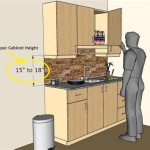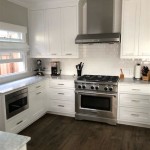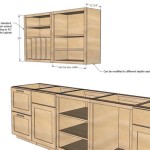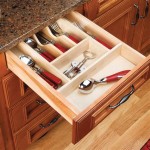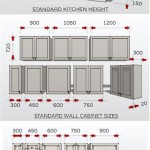Standard Kitchen Sink Base Cabinet Width
A kitchen sink base cabinet is a crucial element in any kitchen design, providing both storage and support for the sink. The width of the base cabinet is a critical factor, influencing both functionality and aesthetics. Understanding the standard dimensions of these cabinets is essential when planning a kitchen renovation or new build. This article will explore the typical widths of kitchen sink base cabinets and the factors that determine the best size for your specific needs.
Standard Kitchen Sink Base Cabinet Widths
Standard kitchen sink base cabinets are typically available in widths ranging from 18 inches to 36 inches. The most common size is 30 inches, offering a balance between functionality and space efficiency. Smaller cabinets, such as 18-inch and 24-inch models, are often used under smaller sinks or when space is limited. Larger cabinets, such as 36-inch and 39-inch models, are ideal for larger sinks or when additional storage is desired.
Here's a breakdown of the most common standard sizes:
- 18 inches: Suitable for small sinks or utility areas.
- 24 inches: A common size for smaller kitchens or when space is limited.
- 30 inches: The most common size, offering a good balance of functionality and space.
- 36 inches: Ideal for larger sinks or when additional storage is required.
- 39 inches: A larger size that provides ample space for a large sink and storage.
Factors Influencing Sink Base Cabinet Width Selection
Choosing the right width for your kitchen sink base cabinet depends on several factors.
1. Sink Size
The size of your sink is the primary determinant of the cabinet width. A small sink can comfortably fit in a 18-inch or 24-inch cabinet, while a larger, double-bowl sink may require a 36-inch or even 39-inch cabinet. It's essential to measure your sink accurately and ensure it will fit comfortably within the chosen cabinet.
2. Countertop Space
Consider the amount of countertop space you want around the sink. Too little space can make it challenging to use the sink effectively and may crowd the workspace. On the other hand, excessive space can lead to wasted countertop area. Ideally, there should be at least 12 inches of countertop space on either side of the sink for comfortable use.
3. Storage Needs
The amount of storage you need is another important factor. Larger cabinets provide more storage space for kitchen essentials, while smaller cabinets offer less storage. Evaluate your storage needs carefully and choose a cabinet that can accommodate your requirements.
4. Kitchen Layout
The overall layout of your kitchen also influences the choice of cabinet width. Consider the position of the sink in relation to other appliances and work areas. Ensure there is sufficient clearance for movement around the sink and that the cabinet fits harmoniously within the overall design.
5. Style Preferences
Your personal style preferences can also play a role in cabinet selection. Cabinets come in a wide range of styles, from traditional to contemporary. Choose a style that complements the overall design of your kitchen and suits your taste.
By carefully considering these factors, you can select the ideal width for your kitchen sink base cabinet, ensuring both practicality and aesthetic appeal.

Fsb36 Ice White Shaker Farm Sink Base Cabinet Kitchen Cabinets

Base Cabinet Size Chart Builders Surplus

Kitchen Sink Base Cabinet Everything You Need To Know

Home Decorators Collection Newport Pacific White Plywood Shaker Assembled Sink Base Kitchen Cabinet Soft Close 36 In W X 24 D 34 5 H Fsb36 Npw The Depot

Kitchen Base Cabinet Size Chart Builders Surplus Sizes Cabinets Drawers

Kitchen Cabinet Sink Base 36 Full Overlay Face Frame Ana White

Bsd48 Kitchen Diagonal Sink Base Cabinet 48 W Along The Wall X 34 1 2 H 24 D Custom Unfinished Stained Or Painted

Dimensions Of Kitchen Sink Cupboard Base Cabinets Cabinet

Sb36 Dover White Sink Base Double Doors Whole Cabinet Supply

What Is Minimum Base Unit Cabinet Size Needed When Purchasing A Kitchen Sink Taps Helpdesk
Related Posts

